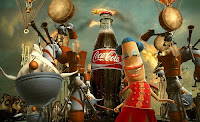 The Back of the Napkin von Dan Roam.
The Back of the Napkin von Dan Roam. Ein Buch, daß weder direkt mit Marke oder Planning zu tun hat, aber trotzdem ganz viel davon widerspiegelt, was unsere Arbeit beinflusst.
Der 2008-er Business Bestseller „The Back of the Napkin“ erklärt einfach und anschaulich, wie Probleme und Lösungs-Ideen einfach und effektiv visuell dargestellt und präsentiert werden. Im Prinzip das, was Planner sowieso die ganze Zeit versuchen. Für alle Planner, die gerne mal lesen möchten, was sie eigentlich den ganzen Tag so machen, wenn sie an einer Präsentation basteln. Und für all die, die selber wissen wollen, wie sie besser und klarer ihre Gedanken und Ideen darstellen können.
Dan Roam leitet alles extrem strukturiert her – ganz verkürzt geht’s im Buch um folgendes:
Unsere 3 „biologischen Tools“: die Augen, das innere „geistige Auge“, unsere Hand-Augen-Koordination – und wie wir sie am besten nutze können. Für mich war es nicht nur interessant, noch einmal über die Art, wie wir Dinge betrachten, zu lesen. Sondern vor allem schön, die Kraft der einfachen selbstgemachten Skizzen im Buch zu sehen – viel besser als jedes Powerpoint Clip Art. Also ab jetzt: selber zeichnen und ggf für Präsentationen einscannen. Ist emotionaler, authentischer, individueller. Und vor allem hilft es beim Denken und Visualisieren, mit Papier und Stift statt direkt am Rechner zu arbeiten.
Die 4 Schritte im „visual thinking“ Prozess: Look – See – Imagine – Show Die ersten drei Schritte sind genau das, , was bei jedem Planning-Prozess für mich selber wichtig ist:
- Im ersten Schritt einfach nur gucken, sammeln und screenen – was haben wir an Informationen? Die Dinge wirklich übersichtlich auszubreiten und mal unvoreingenommen drauf zu gucken. Das, was in vielen „war rooms“ ja bereits gemacht wird.
- Im zweiten Schritt dann wirklich hinsehen und selektieren – was gibt es für Muster, was lässt sich zusammenfassen, wo sind Gemeinsamkeiten, was sticht hervor?
- Und dann zu entscheiden: was fehlt? Sich vorzustellen, was nicht da ist, was fehlt, um den vorhandenen Informationen und Erkenntnissen einen Sinn, eine Richtung zu geben.
Die 6 Wege, zu Sehen – und der Masterplan, wie wir sie darstellen: „who, what , when, where, how, why“Auf den ersten Blick wirkt es wie eine einfache Übersicht über alle möglichen Formen der üblichen Diagramm-Charts. Aber mit der Lektüre des Buchs wird schnell deutlich – der „Visual Thinking Codex“ ist weit mehr als das. Roam offeriert einen echten Masterplan, die übersichtlich darstellt, welche Aspekte wir in welcher Form am besten visuell darstellen (z.B. lassen sich einfache „timeline“ Charts auf einfache oder komplexe Art, qualitativ oder quantitativ, visions- oder exekutions-orientiert, individuell oder als Vergleich, veränderungs- oder Status-Quo-orientiert darstellen. Was genau so auch für Abbildungen zu den Themen „wer/ was“, „wie viel“, „wo“, „wie“ oder „warum“ gilt.
Also ab jetzt: an jeder Flughafenlounge, in jeder Coktailbar ist alles vorhanden, was wir brauchen, um gute, visuelle Präsentationen aus dem Ärmel zu schütteln. Einscannen können wir das Ganze dann ja im Büro...












